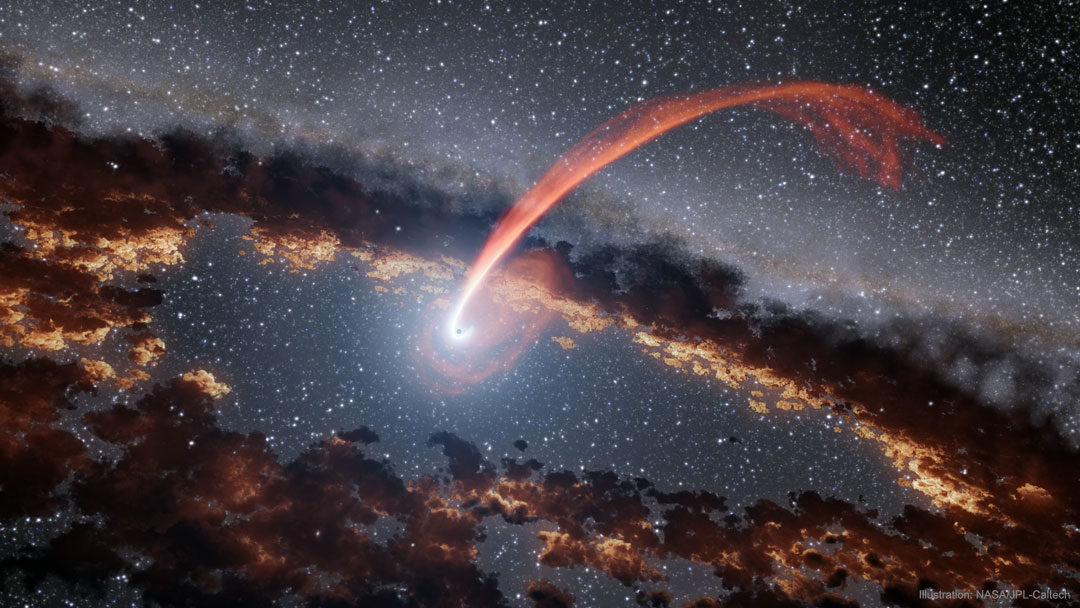2024年5月5日
A Black Hole Disrupts a Passing Star
Illustration Credit: NASA, JPL-Caltech
Explanation: What happens to a star that goes near a black hole? If the star directly impacts a massive black hole, then the star falls in completely — and everything vanishes. More likely, though, the star goes close enough to have the black hole’s gravity pull away its outer layers, or disrupt, the star. Then, most of the star’s gas does not fall into the black hole. These stellar tidal disruption events can be as bright as a supernova, and an increasing amount of them are being discovered by automated sky surveys. In the featured artist’s illustration, a star has just passed a massive black hole and sheds gas that continues to orbit. The inner edge of a disk of gas and dust surrounding the black hole is heated by the disruption event and may glow long after the star is gone.
Hole New Worlds: It’s Black Hole Week at NASA!
Tomorrow’s picture: ringing out the sun
黑洞拆解路过的恒星
图示提供: NASA, JPL-Caltech
说明: 当恒星通过黑洞附近时,会发生什么事?如果恒星直接撞上大质量黑洞,它会掉进去然后消失灭迹。不过,较常见的场景是:当恒星靠得够近时,它会受到拆解失去外层的气壳。而大部分的恒星气体,却不会直接掉进黑洞里。这类的恒星潮汐破坏事件,亮度和超新星爆炸相当,而且愈来愈常为自动化巡天计划所记录到。在上面这幅由画家所绘的主题图示里,恒星刚好通过大质量黑洞附近,而被剥去的气体持续在轨道上运行。这颗黑洞周围的气体和尘埃吸积盘之内缘,受到破坏事件的加热,可能在恒星消失很久之后,都还在散发辉光。
黑洞新世界: 这是NASA的黑洞周!
明日的图片: ringing out the sun




Pingback: 三部辅助望远镜 – NASA中文